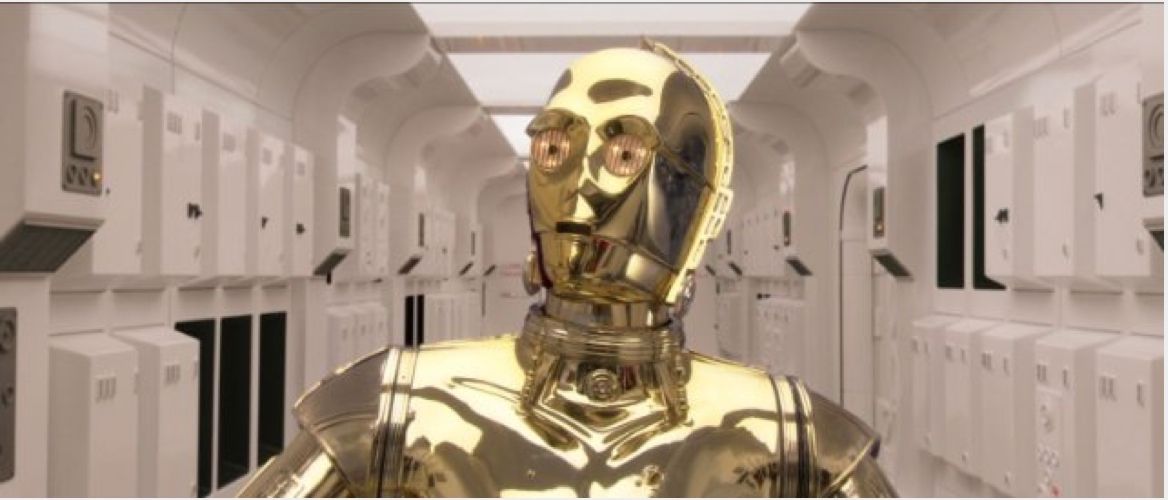How Real-Life AI Rivals 'Star Wars': A Universal Translator?

Artificial Intelligence will rule Hollywood (intelligently) in 2015, with a slew of both iconic and new robots hitting the screen. From the Turing-bashing "Ex Machina" to old friends R2-D2 and C-3PO, and new enemies like the Avengers' Ultron, sentient robots will demonstrate a number of human and superhuman traits on-screen. But real-life robots may be just as thrilling. In this five-part series Live Science looks at these made-for-the-movies advances in machine intelligence.
The "Star Wars" franchise, returning with "The Force Awakens" in December, has portrayed a whole host of cool gadgets. But beloved droid C-3PO's astounding translation abilities might be the most useful in everyday life, and the most likely to be replicated by real-life AI.
Ongoing research could eventually power machine translators that rival the fluidity of sci-fi translators, Google researcher Geoffrey Hinton suggested in a Reddit AMA— he likened the possibilities to those of the "Babel Fish" universal translator in Douglas Adam's "Hitchhiker's Guide to the Galaxy." (In the book, the Babel Fish is a small leechlike fish inserted into the ear that provides instant, universal translation.)
Specifically, artificial brains called "recurrent neural networks" hold the potential for great leaps forward in machine translation, said Hinton, who studies neural networks both at Google and the University of Toronto. [Science Fact or Fiction? The Plausibility of 10 Sci-Fi Concepts]
"A big question is if neural networks will be an incremental step or a revolution in translation," Macduff Hughes, engineering director for Google Translation, told Live Science. Right now, such networks merely supplement phrase- or statistics-based translation, Hughes said. "The more ambitious, long-term goal is if you can train a neural network to translate from scratch."
This kind of translation would, in theory, need just two parts: one neural network to encode a piece of text from a source language, and a second network to decode that data in a second language. Google's current phrase-based translation approach doesn't yet use neural networks — but the company and others are working on the possibilities, Hughes said.
"There are several things that neural networks can get right better than phrase-based translation," Hughes said, including translating words for which the machine has no direct definition. Neural-network-based translation would accomplish this by assigning vectors to words, which show a word's relationship within its own language, Hughes said.
Sign up for the Live Science daily newsletter now
Get the world’s most fascinating discoveries delivered straight to your inbox.
A machine translator could then compare the vector of an unknown word to the vectors of known words in other languages. If, for example, the machine sees that the unknown word "vaca" has similar relationships to other Spanish words as the English word "cow" does to other English words, the robot can learn to translate the word — without human intervention or instruction.
Such robots could potentially power machine translation, such as that performed by Google's own Translate service, which currently uses phrase-based algorithms.
Check out the rest of this series: How Real-Life AI Rivals 'Chappie': Robots Get Emotional, How Real-Life AI Rivals 'Ex Machina': Passing Turing, How Real-Life AI Rivals 'Ultron': Computers Learn to Learn and How Real-Life AI Rival 'Terminator': Robots Take the Shot.
Follow Michael Dhar @michaeldhar. Follow us @livescience, Facebook& Google+. Original article on Live Science.

Michael Dhar is a science editor and writer based in Chicago. He has an MS in bioinformatics from NYU Tandon School of Engineering, an MA in English literature from Columbia University and a BA in English from the University of Iowa. He has written about health and science for Live Science, Scientific American, Space.com, The Fix, Earth.com and others and has edited for the American Medical Association and other organizations.











